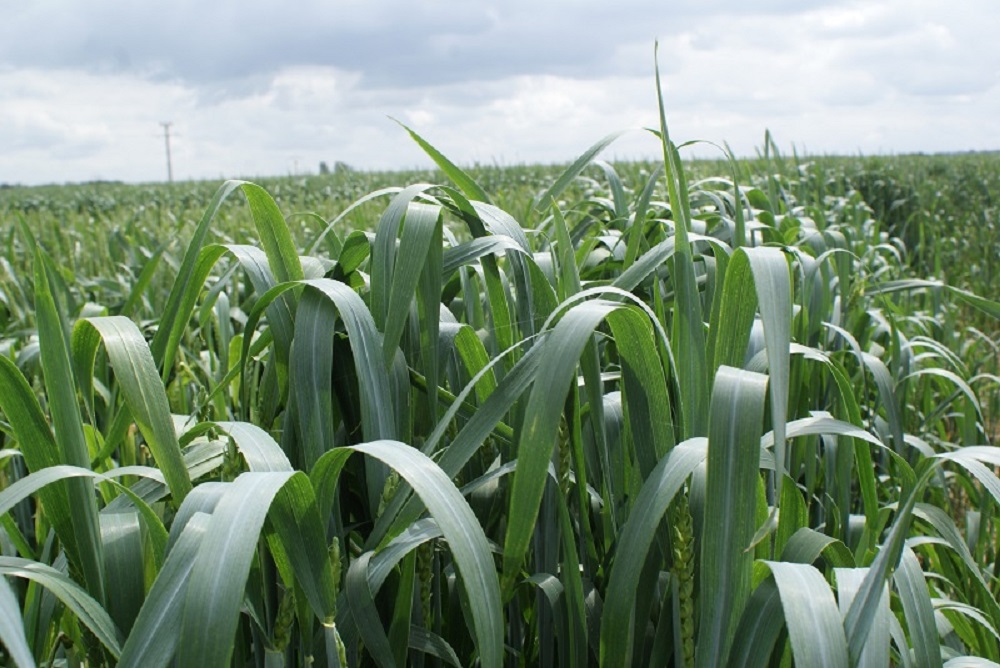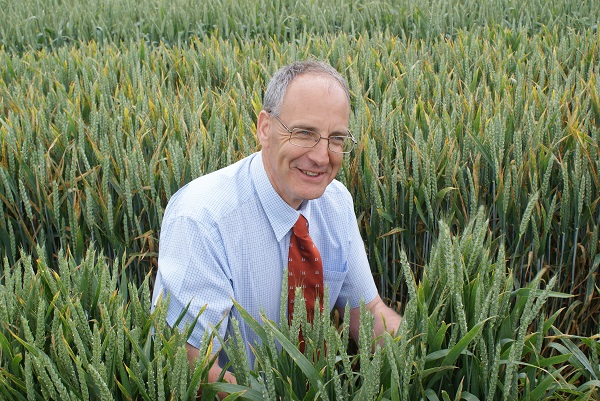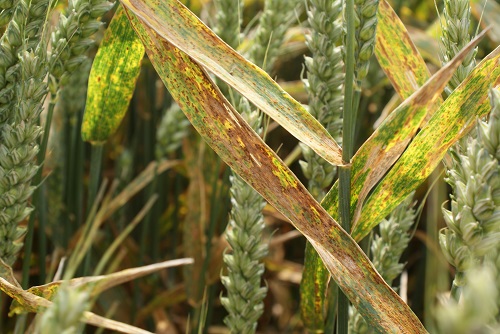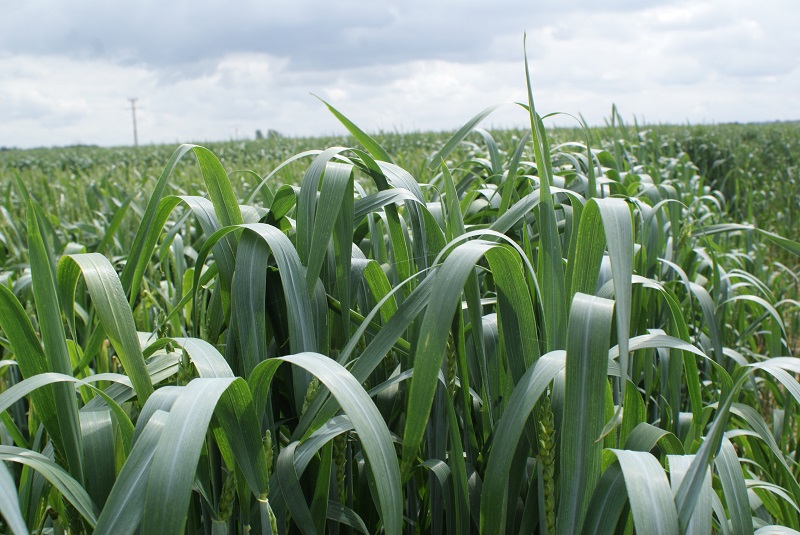
With septoria resistance now rated to the decimal point, growers can more easily select varieties with the best scores. CPM gathers views on the most resistant varieties on the RL.
Don’t throw the baby out with the bath water and discount older varieties.
By Lucy de la Pasture
With breeders now putting on an emphasis on producing varieties with septoria resistance, there are several to choose from on the AHDB Recommended List (RL) with better ratings and without the yield penalties previously associated with resistance genes.
Drawing an arbitrary line in the sand, the varieties with an RL rating for Septoria tritici of 6.7 or above are Crusoe (Group 1), KWS Siskin (Group 2), LG Sundance (Group 4-soft), Freiston (Group 4-hard), Dunston (Group 4-hard) and Graham (Group 4-hard).
Septoria resistance is just one of the key characteristics growers should consider when selecting a wheat variety, suggests Tom Nickerson of Ebbage Seeds, the seeds arm of agronomy company Agrovista.
“From an agronomy perspective, septoria resistance coupled with standing power and a sound specific weight are the three key characteristics a farmer should prioritise when selecting their variety for a chosen market,” he advises.
But there’s no doubt in the mind of Agrii’s Jim Carswell that septoria resistance is becoming a much bigger factor in variety selection than it used to be.

Jim Carswell suggests growers shouldn’t overlook older varieties that have already proven themselves to perform well on the farm.
“With issues around fungicide resistance, especially if SDHI chemistry begins to break down, looking at varieties with better septoria resistance is sensible as a stewardship measure. Septoria resistance doesn’t mean it won’t need a fungicide programme but they offer a wider window in terms of fungicide application,” he advises.
And it’s not just septoria he’s advising growers to pay attention to, yellow rust resistance is right up there too.
“Nobody knows what yellow rust is going to do next, so don’t take unnecessary risks and consider overall management strategy, including the ability of the sprayer to get around the acreage, when deciding on the mix of varieties on the farm.”
Openfield’s head of seeds, Lee Bennett, believes that markets and values are still the primary driver when it comes to variety selection, though adds that varieties with particular weaknesses have to have redeeming features to be worth considering.
“Group 1s have been overdone with the result that premiums are small, with a bigger premium currently available for soft wheats than hard milling wheats,” he points out.
But with just one Group 1 wheat making our cut, what does he think about the prospects for Crusoe?
“Crusoe is a variety that’s going to stay around. It offers reliability when it comes to protein content and performs much better in a commercial situation then the RL yield data would imply,” he says.

Septoria is the biggest threat to yield in the UK and innovation in plant breeding is important for future control
Reliability has proven to be a benefit for farmers over the years with varieties taking large market shares with lower AHDB yield scores, adds Tom Nickerson.
“If growing for a premium market, experience of a variety does provide an element of security,” he says.
Lee Bennett describes Crusoe as not a variety for the North and Jim Carswell agrees, saying that very little is grown in his northern region. Where Crusoe is grown, he advises growers to keep a careful eye out for brown rust, which is its greatest weakness. Siskin however has made much more of an impact in the north of England.
“Siskin is being widely grown up to the Borders but as yet, not much further north into Scotland. It suits the later drilling slot and then provides very vigorous growth and is standing well,” says Jim Carswell.
With its popularity extends further south, Siskin looks to be a strong contender for becoming the biggest selling wheat variety in the UK, believes Tom Nickerson.
The only negative about Siskin that Lee Bennett can see is in its market if aiming to sell as a Group 2 wheat.
“There a doubtful premium for Siskin, unless you’re on the South coast and have access to the export market. Trying to grow as a 13% protein milling wheat would amount to being a rich man’s folly, but Siskin makes a very sound feed wheat,” he says.
In fact, Lee Bennett classes Siskin as being ‘a bit special’ and a variety that ticks all the boxes because of its agronomic virtues, of which it has plenty.
“Its ability to be late-planted and tiller well suits growers with blackgrass problems. It has good yellow rust and mildew resistance (both 9) but does benefit from a good PGR investment,” he advises.
Adding his voice to the general thumbs up for Siskin is Tom Nickerson. “Siskin has taken an impressive market share with its combination of septoria resistance, specific weight and end market opportunities. It’s a proven all-rounder in AHDB trials, with good results on light and heavy land and high yields from Sept drilling onwards.”
Highest of all the varieties on the RL is Sundance from Limagrain, boasting an impressive 7.3 for septoria resistance.
Lee Bennett is finding it hard to contain his excitement about this variety, saying it’s been a very long wait to get a variety like Sundance. That begs the question, why such enthusiasm? He’s very quick to point out its numerous benefits.
“Sundance offers some of the highest yields on the RL; good all-round disease resistance – and with a rating of 9 for yellow rust will be useful for yellow rust diversification; it has orange wheat blossom midge (OWBM) resistance; it performs as a second wheat and isn’t penalised by late sowing.
“On top of its agronomic credentials, Sundance is a Group 4 soft wheat and warrants a premium. It has a slightly lower bushel weight but seems to have a better spec in practice than the RL suggests,” he says.
He sums Sundance up as being ‘universally useful’ and seed will be a guaranteed sell out this autumn.
Tom Nickerson echoes the warning that seed will undoubtedly be in short supply for Sundance.
“For those farmers looking to the variety, I’d suggest buying sooner rather than later. Although it may not have the same grain quality as its competitors, it’s OWBM resistance does elevate the variety.”
From an agronomist’s point of view, Jim Carswell adds that he’s slightly nervous about the standing power of Sundance in his northern region.
“It’s probably a better variety for the East and West, and is one that I’d avoid sowing in fertile sites and in the early drilling slot,” he adds.
New addition to the RL, Freiston, garners far less enthusiasm from our panel, with concerns expressed about both its straw characteristics and disease stability.
It’s very tall and weak-strawed so needs to be managed very well, comments Lee Bennett and Jim Carswell adds his reservations about its standing ability. Though Tom Nickerson is doubtful much Freiston seed will be available in any case.
Fellow newcomer Dunston is also from Elsoms, the same stable as Freiston. It’s a variety Jim Carswell has had some experience of, but he hasn’t seen big acreages yet.
“I prefer Dunston over Freiston in the north of England/Borders region. It has no issue in terms of maturity and no major weaknesses, though yellow rust and mildew need to be watched. Dunston’s a variety that looks to be good quality-wise but it does need managing.”
Lee Bennett adds that there was movement in Dunston’s disease stability last year for both septoria and yellow rust, depending on the site, and it’s a variety he would have preferred to have seen slightly downgraded for disease resistance to reflect this.
Pick of the bunch in the Group 4s is Graham and is already a success story with growers, who have been quick to adopt the variety.
“Graham has had a good introduction and, if it performs well on farm this year, it will undoubtedly increase its market share and its early maturity will be a benefit to many farmers,” comments Tom Nickerson.
“Graham was a sell-out last year and yielded particularly well in the West while still producing very respectable yields in the East,” says Lee Bennett.
Northern growers were similarly impressed by Graham, which was the best first wheat in Agrii’s northern trials. Among its virtues, suitability for early drilling is a characteristic that our panel picks out.
“Graham can be sown early (like JB Diego) and it tillers well, though its growth is prostrate which doesn’t make it particularly useful in blackgrass situations. Harvest is early and Graham has beautiful grain, with a high Hagberg,” comments Lee Bennett.
Jim Carswell has been finding more yellow rust in Graham this year than last. “Adult resistance should kick in, but it’s something that needs monitoring. Brown rust is another disease to look out for,” he advises.
Taking a wider view, what other varieties do our panel deem worthy of consideration – the wildcards?
Lee Bennett believes Shabras is a variety going places. “Shabras (Group 4-hard) is as early as Graham and suits light soils, although it’s standing power may be questionable on fertile sites. It offers better disease resistance than competitor Group 4 Kerrin and should be considered as a natural second wheat, similar to its parent, Hereford,” he suggests.
Another wildcard suggestion is Motown (Group 4 soft), which he describes as ‘like Revelation but with 5% more yield’.
“Motown is very early to harvest and can be drilled on the early-side too. It looks very clean, as well as having been consistent across all regions. It can be grown as a second wheat, on all soil types and has OWBM resistance to boot. I think Motown makes an ideal partner to Sundance because they really complement each other,” he adds.
For Jim Carswell, Skyfall is a variety he rates highly, saying that it’s one that has delivered on its promise – so far.
“Skyfall offers good all round agronomics with good grain quality and early maturity, useful for spreading the harvest. Candidate varieties Elicit and RGT Gravity have also looked like ones to watch.
“Every variety has a place so when making decisions on which ones to grow, don’t throw the baby out with the bath water and discount older varieties that have already demonstrated consistency on the farm,” he advises.
Tom Nickerson’s wildcard is Belepi which he believes is ideal for those looking for a later drilled wheat to deal with blackgrass issues.
Summary data for varieties.

Source: AHDB Recommended List, with the exception of Belepi (*breeders own data).
Prospects for the genetic control of Septoria tritici
Limagrain UK, breeders of LG Sundance, feel optimistic that this step forward in genetic control for Septoria tritici goes some way towards the goal of an almost septoria-resistant variety in the future.
“As breeders, we are now in a position where we increasingly understand the range of genetics in current varieties and throughout the material we have in our breeding programme. We know that with this material, we can breed for septoria resistances of 6 or 7,” explains Ed Flatman, senior wheat breeder for the company.
“Now we’re looking at how novel combinations of some of these genetics can lead to better resistances, such as bringing together parental resistance, which on their own are not significant but each contribute sufficiently to create an overall more robust resistance.
“The speed at which we’re able to analyse the genetics we have, through the use of thousands of markers, allows us to look for trends and narrow these down to specific resistances relatively quickly,” he explains.
He points out that this approach was the basis of the breeding programme for Limagrain’s market-leading variety, Crusoe which carries a septoria resistance rating of 6.7 which is clarified as a 7.
“Crusoe’s rating is better than either of its parents – Shamrock (6) and Cordiale (5) – and five years since it was recommended, the resistance is still holding strong. It shows how adding or stacking together smaller elements of resistance can have the desired effect and be robust enough to withstand ever-changing climatic and disease challenges.
“It’s a similar story with LG Sundance whose parents, Hereford, Viscount and Cassius, only offer a maximum of a rating of 6, but when combined have a big effect to produce the exciting 7.3 rating that Sundance holds.”
Ed Flatman hopes that growers will welcome this genetic tool and utilise it to its full potential. There’s no longer a need to choose yield over disease resistance as has been done in the past, with varieties such as Crusoe and LG Sundance offering both high yields and good septoria resistance.




